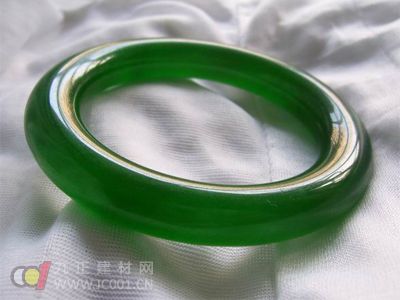Differentiate between emerald and synthetic gemstones:
The difference between emerald and similar natural green gemstones, synthetic emeralds, and fakes. Similar natural green gemstones are fluorite, green tourmaline, apatite, jade, green sapphire, chrome vanadium calcium aluminum garnet; artificial emeralds and imitations with synthetic emerald, beryl three-layer stone, foil-lined grandmother Green, oiled emeralds, etc.
The differences are as follows:
Fluorite, microstrip blue green, homogeneous body, hardness, 4, density 3.18 g / cm3, larger than emerald, fluorescent light blue.
Green tourmaline, dark blue green tourmaline is changed to pure green after treatment, the dichroism is obvious, the birefringence is high, it is 0.18, and the density is large. Apatite, light blue apatite with a blue color, has a blue hue, a hardness of 5, a large refractive index of 1.632-1.667, and phosphorescence under ultraviolet light.

Jade, high-quality translucent emerald green jade is more like emerald, but jade has a fiber interweaving structure, with finer fibers, emerald does not have this structure. In addition, it contains chrome vanadium calcium aluminum garnet, emerald green, homogeneous body, strong argon diamond.
Synthetic emerald, flux growth method and hydrothermal synthesis, rich color, strong red fluorescence under ultraviolet light, bright red under the color filter. There are also beryl three-layer stone, foil-lined emerald, oil-filled emerald, etc., which can be distinguished from emeralds by careful observation and identification.
Synthetic gemstones similar to emeralds include synthetic emeralds, YAG (yttrium aluminum garnet), and green glass. Among them, the distinction between natural emerald and YGA and glass can be made according to the following two points:
1. Natural emeralds are mostly flawed and cracked. This is similar to ruby. The sputum is mostly "cotton", and sometimes some black mineral inclusions and other impurities are visible. The synthetic products are mostly clean or have a small amount. bubble.
2, emerald visible dichroism, observed from different directions, the gemstone is emerald green - blue green or yellow green, while glass and YAG have only one color.
The difference between natural emeralds and synthetic emeralds is mostly done in the laboratory. The general differences are:
1, natural emerald refractive index is generally between 1.57-1.59, and synthetic emerald often has a low refractive index, generally less than 1.57, but there are exceptions.
2, the natural emerald has a large proportion, generally greater than 2.7, and the emerald synthesized by the fusion method, the specific gravity is only about 2. 65-2.66. However, it should be noted that the hydrothermally synthesized emerald also has a higher proportion.
3, natural emeralds mostly have sputum and three-phase inclusions, acicular, columnar, granular crystal mineral inclusions and other synthetic emeralds are often relatively clean, hydrothermally synthesized emerald inclusions, "window-like The melted synthetic emerald inclusions are in the form of bread crumbs. Natural and synthetic emeralds have different inclusion characteristics.
4. Natural emeralds react slowly under ultraviolet light, or appear dark red, while synthetic emeralds tend to produce strong red fluorescence. This test should generally be compared to the standard.
Carbon Steel Pipe End Cap,Carbon Steel Pipe Cap,End Cap
,Square Pipe Steel Tubes CO.,Ltd , http://www.ns-pipefitting.com